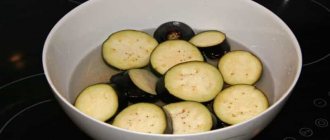What fisherman doesn't dream of owning a boat?
If funds are available, the boat is purchased first. Unfortunately, not every fisherman can afford such an expensive “pleasure”. Therefore, you have to fish in conditions that correspond to reality, although it is never harmful to dream. Nowadays, almost all boats are made not from rubber, but from PVC material, since it is more reliable and more resistant to the effects of the natural environment. Despite this, a PVC boat requires some care, otherwise it will not last long. This is especially true in winter, when no one uses the boat and it has to remain in such conditions for several months.
The presence of low temperatures, when the PVC material no longer has such flexibility, damage to the watercraft is possible. It will be difficult to repair it, and the boat will no longer be as reliable. Moreover, if there is water left somewhere, which even tears metal when it freezes. Therefore, it is very important to know how to properly store a boat in winter so that it lasts for many years.
Storage and operation of a PVC boat in winter
Content
- Ways to store a PVC boat Hang
- To wrap up
- Choosing a place
This article will talk about how to store a PVC boat in winter. You'll learn where to place it, whether it needs to be evacuated, and how to protect your boat from mice and other rodents. In the comments, you can share your secrets for properly storing PVC boats in winter.
Buying a PVC boat is not a tricky thing; caring for it, and most importantly, preserving it for the winter is much trickier. If you don’t want your beauty to serve you for only a couple of years, after which it will only go to the trash heap, then this article is for you.
Before preparing for storage, it is important to decide on the place where your PVC boat will spend the winter. There are two most popular options: either in some room (garage, utility room), which allows you to store the boat in an inflated state, or in a storage room, in a folded state.
Necessary conditions for storing an inflatable boat
- There should be no chemically active reagents in the room where the boat is stored: gasoline, alcohol, acetone, and various acids. And especially near the boat itself.
- Plus stable temperature: ideally, if it is 18-20 degrees Celsius, but in any case the temperature should not be below zero or, on the contrary, exceed 25 degrees.
- The absence of direct sunlight is very important when storing a rubber boat - ultraviolet radiation quite strongly destroys materials (PVC) and reduces the strength of the boat.
- A certain level of humidity: we keep the humidity within 10-30%. If the humidity is higher, the material will wear out faster, and with a sharp change in temperature in the room, condensation may form, which means mold and its negative consequences are likely.
It is important to remember that if you bring the boat into a warm room after long-term storage in cold conditions, then under no circumstances unfold it immediately. The fact is that with sudden changes in temperature, the materials of PVC inflatable boats break down, cracks and breaks appear, which greatly reduce the wear resistance of the boat.
It’s better to store the boat in a deflated state in a cover - this way, firstly, it will be easier for you to find a place for it, and, secondly, it is less susceptible to negative conditions - for example, the cover protects from rodents, and the boat itself is less exposed to external influences of light, moisture, dust, etc.
Methods for storing PVC boats
hang
In the first case, experienced fishermen advise hanging the inflated boat on slings from the ceiling or rafters, or leaving it in this position until spring, after letting the air cylinders in a little. The main thing is to ensure even support and a wide contact area so that kinks do not subsequently form on the PVC, which will then harden and can lead to cracking. This method will maximize the safety of your boat from rodents.
To wrap up
As for those fishermen who have neither garages nor a warm utility room, and storing an inflated boat at home, hanging it from the ceiling, is fraught with family squabbles, then they choose the second option - store it folded either on the balcony or under the bed, depending on who convenient.
Proper preparation of a PVC boat for storage
No matter where you store the boat, in what form and at what time of year, the preparation stage will always be the same. Everything here is strict, but quite simple.
Step 1. Wash the boat. Since it sometimes swims into fairly swampy bodies of water and “parks” on sand and pebbles, small natural particles, dirt, etc. remain on its surface.
Lower the cylinders a little, and also disassemble the floor of the boat. It can be aluminum, wood or inflatable. The boat should be washed with soapy water and a soft sponge. Be sure to remove algae deposits, mud, and stuck fish scales so that rodents do not become interested in your boat as their dinner in winter. Be sure to remove all abrasive substances such as sand, limestone. Under no circumstances should you use gasoline or alcohol-containing substances when washing, only soap solution, otherwise the PVC may begin to thin out. It is best to wash the boat in the sun, in the air - this way it will wash and dry faster and better. When cleaning the inner surface of the boat, wash especially thoroughly the area where the sides and bottom meet. Inspect the joints of the sides and bottom, clean them with soapy water and wipe with a dry cloth.
Pro Tip: Be sure to spray both the exterior and interior surfaces with talcum powder using a dry cloth. Some of the talc can be poured into cylinders; shake them to evenly distribute the talc over the entire surface. Talc will help prevent exposure to moisture during long-term storage, so if you know that the room where the boat will be may create excessive moisture, so prepare it by treating it with talc.
Step 2. Dry the boat. It is best to dry it in the sun - it will be faster and more thorough, but if this is not possible, then you can simply leave it in the open air. There should be no moisture remaining, especially if you are going to store the boat folded. You can dry it by turning the boat over on one side and then turning it on the other.
Step 3. Before you put your watercraft away for storage, you need to inspect it for damage and the degree of wear. This way you can keep the boat in working condition for as long as possible - if you notice minor damage, cracks or severe wear, then carry out repairs in a timely manner. It is better to do this before you put the boat into storage, so that you can immediately take it into use at the beginning of the season.
Step 4. Remove components: seats, oars/motor, pump, etc. Carefully put all the parts into a separate bag. In order not to lose fittings and small elements, we put them together with the boat in a box or attach the bag to the case with a belt.
Step 5. Deflate the boat. The most preferable storage method is still deflated in a case and box. The boat needs to be deflated, but not completely, leave a little air so that sharp kinks are not created when folding.
Step 6. Properly pack it in a case. Fold the boat as tightly as possible - in a roll or in several folds, depending on where you will store it - in a case or a box.
Step 7. The boat can also be stored in inflated form. In this case, it is best to hang it on slings from the ceiling - in an inflated state and with all accessories.
Rules for storing boats and stages of preparation before wintering
Regardless of which method of preserving the watercraft you choose, something else is important - how you follow a number of specific rules for preparing for wintering.
Choosing a place
An ideal place to store a boat in winter can be considered any dry room with a positive temperature, such as... a storage room in an apartment, a heated garage or other utility rooms where the necessary conditions prevail. A good place may be a permanent unheated garage that does not have sudden temperature changes and, as a rule, has a stable negative temperature of no more than -10-15 C.
A less acceptable place to store a PVC boat in winter is a metal garage, glassed-in balcony, shed and other utility rooms where significant temperature changes are possible.
Another point - rodents. Mice and rats are very formidable enemies of PVC. They should be especially wary of in garages and sheds that have a cellar with “food” reserves.
Washing and cleaning
Most PVC fishing boats require maximum cleaning after a season of use. The fact is that the fishy aroma is very attractive to rodents, which in a very short period of time can turn a boat into a “sieve”. By the way, when cleaning the boat from foreign particles for the first time, pay special attention to hard-to-reach places.
The second step is to wash your watercraft well.
It is convenient to use a mini car wash, naturally with little pressure. If it’s not there, then we simply take a car sponge, a rag, warm water, a detergent that is non-aggressive to PVC (dishwashing detergent works quite well in this role) and go ahead, scrub off the reminders of the busy fishing season.
Drying
After washing, it is important to dry the joints between the bottom of the PVC boat and the sides, all seams and corners - most often mold develops in such places. You can use a hair dryer for this if it has a cold drying setting. To remove water and condensation inside the sides, you should hold the boat with the valves open for a while.
Equipment
The next stage is inspection and preparation for storage of those items that are included in your PVC boat. This applies to plywood seats, covers, pump, oars and other equipment that you are unlikely to need in winter. We wash everything well and don’t forget to dry it.
Package
After all the procedures have been completed, you can begin packaging the PVC boat in a special bag, bag or box. The most important thing is to carry out this process on a clean, level and smooth surface, so as not to carry dirt and water inside the just washed and dried boat. Also, when rolling up and packing a boat for long-term storage, it is advisable to try not to apply much force, which can lead to creases in the PVC fabric. Don’t forget to screw the oar locking nuts onto the oarlocks, and place the valve covers so as not to damage them. As an option, some fishermen, if there is high humidity in the room, sprinkle the boat with talcum powder or baby powder.
What information do you need to know about PVC boats?
During the warm season, there are no problems with storing PVC boats.
They respond well to high humidity and temperature. However, you still can’t keep them in direct sunlight all the time. Also, it is necessary to remember that PVC does not lend itself to great stretching. Although PVC is stronger, when inflating the boat, do not try to exceed the recommended pressure in the sides. It is generally accepted that the optimal pressure indicators are 186 mm of mercury or 0.25 kilograms per square centimeter. PVC material is not afraid of low temperatures, but when the air temperature drops below -10 degrees Celsius, the material becomes brittle and can tear at bends when exposed to impact (for example, you decide to move a boat from place to place). So, as you can see, storing a PVC boat in winter requires careful handling.
Products made from PVC material are loved by rodents. This point is worth considering when you choose a place to store your boat. Rodents should not have access there.
Otherwise, during the cold season, a PVC boat can be stored in a closed, dry room - in a garage, storage room, shed, summer kitchen or on a glazed balcony. The main thing is that at low temperatures there is no strong impact or no attempt to turn the boat around, but at the same time it does not exceed the upper limit of +45° C.
Do I need to sprinkle the PVC material with talcum powder or lubricate it with something before folding the boat, as is done with rubber products? There is no need for this. Moreover, avoid contact of PVC material with solvent, oils, silicone or gasoline, or even with vapors of these substances.
Fishing tricks. How to fold a boat correctly - video
The most important thing is to carry out this process only on a flat and smooth surface, so as not to bring dirt into the newly washed boat, which can become moldy in the spring. Also, it is advisable to try not to apply much force or sudden movements during the process of rolling and packaging. Such actions will lead to kinks and cracks. As an option, some fishermen, if there is high humidity in the room, sprinkle the boat with talcum powder or baby powder.
You can discuss storage options and share secrets with newcomers to this issue on our forum, in a special section.
How to Preserve an Engine
For PVC motor boats, special storage conditions must be created in winter. If condensation gets inside the engine, many of its components may be damaged. When there is no use in winter, this phenomenon is not uncommon. Some people mistakenly believe that oil on engine parts has a preservative effect. But over a long winter, it gradually drains from surfaces, since it does not contain additives, and therefore will not serve as reliable protection for the engine. There is only one way out - to properly preserve the engine, so as not to take it for repairs in the spring.
The first stage of conservation is carried out directly on the water on the final day of the swimming season. A special preservative is supplied to the power system, which penetrates the fuel and creates a protective layer on the piston, crank and connecting rod elements. Afterwards, already on the shore, they take the following actions:
- turn out the spark plug;
- spray a little preservative directly into the fuel combustion chamber;
- pull the engine a couple of times to distribute the preservative and remove water from the cooling system;
- the engine is left in a vertical position, the spark plug is screwed into place.
Preserving a PVC boat engine for the winter
The next stage of engine preservation takes place in the workshop, utility room, where there are the necessary tools and vices, as well as transmission oil for gearboxes, spare gaskets, washers, and an oil drain pan. They also buy additional lubricant for rubbing parts, mineral motor oil, and, if necessary, a new filter.
The operating procedure is as follows:
- Unscrew the screws on the gearbox housing and slowly drain the oil;
- washers damaged when removing screws are subsequently replaced;
- if the oil has become opaque or changed color, remove the old ones and install new oil seals;
- in a vertical position of the motor, fill in new oil in the required volume (according to the instructions for the gearbox);
- inspect the propeller, propeller shaft, and other important parts - they should not be chipped or bent, otherwise they will have to be repaired;
- cover the shaft and all rubbing parts with protective lubricant;
- drain unused gasoline, remove and blow out the fuel filter;
- Cover the engine tightly or place it in a special case and place it in a safe place for storage.
Outboard motor storage
Is it possible to store a boat in a cold garage?
First, you need to decide on the storage location. The most accessible options for our fishermen are: 1) home storage, 2) storing the boat in the garage. In the first case, the most important thing is to find a suitable place for the boat (so that it does not interfere with your daily activities). The second is to protect vinyl chloride from the most dangerous influences, namely: cold and the teeth of rats (unfortunately, even today rats periodically appear even in strictly insulated basements and garages). But first things first.
Regardless of where the fisherman plans to place his boat for winter storage, it must be prepared in a special way. Fortunately, it's not that hard.
How to store a boat in winter: step-by-step instructions
We consistently carry out three stages of preparation for proper storage:
1) Thorough cleaning of the boat
- All boat cylinders are inflated to operating pressure. If the boat is equipped with a rigid floor made of plywood, aluminum or an inflatable Air Deck, these elements are not installed.
- Next, we thoroughly clean the surfaces of the cylinder and floors using a weak alkaline (soap) solution. A soft brush will help us in this matter.
For reference: at our service center, boats are washed using a special chemical composition.
This is done not only to clean the side of dirt and sand, which, by the way, can act as an abrasive - and this will lead to the appearance of unsightly abrasions and premature abrasion and thinning of the cylinder fabric. The chemical composition will give the boat a rodent-repellent odor - which is very important. In winter, hungry tailed fish flock en masse to garages - they are extremely interested in the fishy smell, mucus and scales that inevitably remain on the cylinders and the bottom of the boat after fishing. In an attempt to get to the source of the smell, rodents make passages in a rolled up “skin” boat. As a result, in the spring the boat turns out to be decorated with a pattern a la “Vologda lace”. A persistent chemical smell helps repel rat infestations. By the way, please note: a completely new service is currently available at the service station, allowing you to return the boat to its former freshness and attractive appearance. This is cleaning PVC using hot steam. Steam does not harm the material and removes contaminants as if they were not there, it is a kind of analogue of a “bath” - only it is not the fisherman who is steaming, but his inflatable assistant! —> Watch a video with an example of this service on the YouTube channel “Boats-Peter”
2) The second stage - we dry the boat efficiently
- Before drying, it would be a good idea to conduct a thorough inspection of the watercraft to look for mechanical damage and abrasions and eliminate them by placing patches or patches in the right places.
- Important: a boat properly prepared for winter storage must be very well dried. This is an axiom! The fact is that the moisture remaining on the boat’s cylinders over a long winter can become a breeding ground for all kinds of fungi and mold, and can also lead to damage to the top layer of PVC fabric.
In a service center, drying occurs using compressed air, which not only speeds up the process itself, but also allows the fabric and pads to be dried as thoroughly as possible. It is also important to dry the boat not only from the outside, but also from the inside of the cylinders. At the service station, the boat's cylinders are inflated and deflated several times using an electric pump.
Preservation of outboard motor PVC boat
If your boat is equipped with an outboard motor, it will need to be preserved before winter storage. You can do this yourself or ask a boat mechanic for help.
Preparation for conservation can be divided into several stages.
- Using clean tap water, thoroughly rinse the outer surface of the motor to remove dirt. Let the water drain, and then proceed to flushing the cooling system.
- Depending on the size and power of the motor, the method of cleaning the cooling system will differ.
For flushing engines up to 4 liters. With. You will need a barrel of water. The device must be secured above it so that the suction hole of the cooling system is completely covered with water. In this case, the motor should not touch the walls and bottom of the container. For cleaning models with power from 5 to 15 hp. They use special fittings that are attached to the suction of the cooling system. Before applying water, inspect the openings in the cooling system for foreign objects. Remove dirt and algae residues with a piece of wire. Start the water supply and run the engine at idle speed for 5-10 minutes. When flushing, do not run the motor at maximum power, otherwise it may spin out or fly off the mount. - After flushing, disconnect the fuel line from the engine and let it run for a while. When the engine begins to choke due to lack of fuel, turn on the starter until the engine speed begins to drop. Continue using the starter until the fuel is completely empty.
- Treat the engine with a preservative to protect moving parts from corrosion: cylinders, bearings and pistons. Remove the spark plugs and switch stud to remotely shut off the engine. Using the starter cord, slowly turn the engine flywheel while spraying preservative into the spark plug holes.
- Change the oil in the gearbox housing.
Apply water-repellent lubricant to all moving parts. It is advisable to purchase lubricant from specialized dealers; for example, for Yamaha, use only lubricant and oil intended for engines of this company. After this, the motor can be sent for storage. It is advisable to store it in a vertical position; for this you can equip a special stand or buy a cart for the motor.
Use only lubricants and oils intended for engines of this company.
How to store an aluminum boat in winter
Aluminum boats can be stored in winter both outdoors and in an unheated room (garage, shed). The metal withstands frost well and is not afraid of temperature changes, as well as high humidity and the appearance of drops. In any case, the watercraft must be covered with dense material, for example, a tarpaulin.
An aluminum boat can be stored outside even in winter
Attention! Running lights, motors and other accessories are removed and dried in advance. After this, they are lubricated with oil and stored in a dry garage.
Systems for storing PVC boats in a garage under the ceiling
With the GarageTek system, there are two ways to store your boat at height. The simplest option is to use universal brackets on which you can place a narrow and light kayak, as well as a folded inflatable boat.
One universal bracket can support loads up to 20 kg
This is the most economical storage option: the brackets are easy to move inside the garage along the guide panels, and they are also suitable for rooms with low ceilings. In addition to the boat, you can place oars and the necessary fishing equipment on the brackets. The main thing is not to put anything inside the boat itself so that nothing puts pressure on it.
Two universal brackets are enough to store a light boat
The second option is a universal lift, which is suitable for storing heavy boats. Thanks to the device, you can quickly raise the craft to a height of up to four meters. This is the most efficient storage method, allowing you to free up as much space as possible in your garage. With such a lift, you won’t even be able to accidentally tip the boat onto the floor - the structure will be reliably protected by self-locking cables.
If you are going fishing, you can immediately lower the boat onto the roof of your car
Storage rules
If you need to preserve a watercraft in winter, the same rules apply; for summer, different requirements apply. We need to take this into account. Below are general rules and basic principles that will help preserve the product.
- It is important to know at what temperature the swimming device should be. Range – from +5 to +30 degrees. The optimal mode is +5-15 degrees in winter and +20-25 in summer, these are ideal conditions.
- The humidity should not be too high, as this will lead to the formation of mold and mildew. This will reduce the strength of the canvas and will further lead to its fragility and brittleness.
- In no case should exposure to ultraviolet rays be allowed; PVC can be destroyed because of this. It is important to use a cover that completely protects from the sun.
- The boat should not be inflated; air pressure over a long period of time has a destructive effect on the PVC structure. This synthetic material is not very elastic.
- Do not overtighten the cover or bag containing the flotation device as this may cause the base to become brittle and breakable.
Do not place your bag on any sharp objects. The surface must be level. It is better not to leave it on a concrete floor; it is better to place it on a wooden pallet. You can lay down an oilcloth or a sheet of linoleum.
Where and how to store a PVC boat in summer
The storage location for a PVC inflatable boat in the summer can be anywhere. The material can withstand temperatures well in the range from -10 to +45 °C. Therefore, even if the craft lies in the sun for several days, there will be no consequences. But it is better to avoid prolonged exposure to sunlight, temperature changes and precipitation.
In summer, for storing a PVC inflatable boat, it is optimal to choose a place in the garage under the ceiling or keep it indoors. If left on the floor or in a cellar for a long time, the material can be damaged by mice and other rodents.
The sides and bottom are cleaned of dirt on the shore
Before storage, the inflatable watercraft must be prepared:
- Remove dirt from the surface. Otherwise, the river waste will dry out, and it will be much more difficult to remove it. In addition, the swampy smell attracts rodents.
- At home, the inflatable watercraft is thoroughly washed using a liquid detergent that produces abundant foam (for dishes).
- Then you need to find the cracks and mark them with a marker, and after washing, seal them.
- Inflate the sides well and dry. There should be no water left not only on the surface, but also on folds, on the bottom and other inconspicuous places. It is better to dry in the shade, outdoors or in a well-ventilated area.
- Wash and clean oars and other accessories. Pack it, put it in a corner or put it on a shelf or rack.
- Deflate the air, leaving the PVC boat slightly inflated. Hang from the ceiling in a garage or other utility room.
- The last step is to treat the area next to the inflatable watercraft with special anti-rodent sprays. But the substance should not fall directly on the product. Spray the composition at a distance of 50–60 cm.
If there is very little space, the air is completely vented. In this case, the inflatable product must be rolled up correctly. To do this, place it on the floor or on a wide table and stack the cylinders, moving towards the center. They should press against each other exactly along the contours.
It is necessary to ensure that there are no creases when folding, and that the inflatable watercraft itself is packed as loosely as possible (no need to press or arrange). At the same time, there should be no objects on the surface of the product, including oars and other accessories.
In cold weather and summer, it is better to place a PVC flotation device under the garage ceiling
What can happen to a PVC boat that is stored in the cold?
When stored in the cold, creases (white spots and stripes on the material) may appear on the PVC boat; they appear when a cold and frozen boat is turned around or somehow “disturbed.”
Creases are not a death sentence, they do not harm PVC, they are “healed” by hot sun rays or under the heat of a hair dryer. Thus, if you do not touch the boat, which is stored in the cold, and allow it to “warm up” before assembling, then you don’t have to worry about creases - there won’t be any.
Popular sections: Hunting boats, Fishing boats, Low pressure boats, Motor boats, Rowing boats. Popular boats for motor: Aqua Boats, Riviera Boats, Apache Boats, Piranha Boats, Hunter Boats, Frigate Boats, Stealth Boats, Flagman Boats, River Boats, Polar Bird Boats, Inzer Boats for motor. Popular rowing boats: Inzer boats, Aqua Optima boats, Aqua Master boats, Frigate rowing boats, Piranha rowing boats, Stefa rowing boats, Monsoon boats.
Other articles











